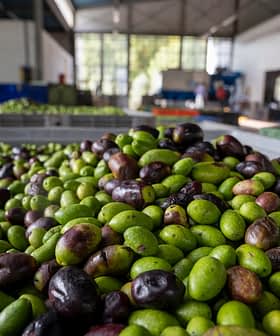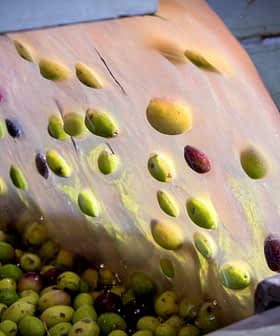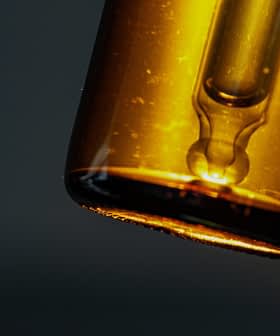New Method Detects Olive Oil Adulteration, Reduces Environmental Impact
Researchers have developed a new method using side-front face fluorescence spectroscopy to detect olive oil adulteration, reducing energy consumption and environmental impact. This method, outlined in the Food Chemistry journal, offers faster analysis, making anti-adulteration assessments more accessible and can detect fraud as low as five percent. The technique could become a standard tool for monitoring olive oil quality and origin, pending evaluation and approval by regulatory frameworks.
Researchers from Moroccan and French universities have developed a new method to detect olive oil adulteration, which could significantly reduce energy consumption and environmental impact.
According to the authors of the research, published in the Food Chemistry journal, the new tool also shortens the time required for olive oil analysis, making in situ anti-adulteration assessments more widely accessible.
“Extra virgin olive oil adulteration, whether by mixing with lower-quality olive oils like ‘virgin’ oil or with other vegetable oils, is a form of consumer deception and negatively impacts the reputation of producers,” Hicham Zaroual told Olive Oil Times.
See Also:Researchers Use Ultrasound to Detect Adulterated Olive OilZaroual, co-author of the study, is a scientist in the Environmental Technology, Biotechnology, and Bioresource Valorization team at Abdelmalek Essaadi University in Tetouan, Morocco.
According to the authors, fraud involving different grades of olive oil is more difficult to detect than blends made with other vegetable oils.
“This type of fraud reduces the nutritional and sensory benefits of olive oil, misleading consumers, especially under strict laws requiring clear classification under certifications like PDO or PGI,” Zaroual said.
PDO (Protected Designation of Origin) and PGI (Protected Geographical Indication) are European Union quality certifications that ensure a product’s authenticity in terms of content and origin.
“In such a context, it’s crucial to detect even minimal adulteration to preserve product quality and consumer trust,” Zaroual said.
The study revealed that side-front face fluorescence spectroscopy achieves up to 100 percent classification accuracy when paired with advanced statistical analysis, such as partial least squares discriminant analysis.
Partial least squares discriminant analysis is a supervised method that applies mathematical and statistical techniques to chemical data (chemometrics) to classify samples based on their spectral profiles.
When a method is supervised, it means that the model is trained using labeled data.
In this case, the researchers already knew which olive oil samples were extra virgin olive oil and which were adulterated, and by how much.
The model learns to recognize patterns associated with each category and then uses that knowledge to classify new, unknown samples.
According to the researchers, the new method is faster, simpler and more cost-effective than traditional techniques such as high-performance liquid chromatography and gas chromatography-mass spectrometry.
High-performance liquid chromatography is used to separate and quantify compounds in liquid samples. It forces the sample through a high-pressure column filled with stationary material, where compounds separate based on their chemical interactions.
Although precise, high-performance liquid chromatography is considered burdensome due to the need for expensive solvents, time-consuming preparation and specialized equipment and training.
Gas chromatography-mass spectrometry combines gas chromatography for separating volatile compounds with mass spectrometry to identify them by their molecular fragments.
While highly accurate, it is technically complex, costly and limited to volatile or samples deriving from chemical alterations. It also requires extensive preparation and skilled personnel.
“The new technique needs minimal resources and can process many samples quickly,” Zaroual said. “Additionally, it can be applied in real-time, in situ, to detect fraud without requiring highly sophisticated laboratories, making it an innovative step in quality control.”
According to the researchers, side-front face fluorescence spectroscopy also stands out compared to other spectroscopic techniques already used for olive oil analysis.
“Side-front face fluorescence spectroscopy stands out due to its unique method of detecting olive oil’s chemical composition through fluorescent light emissions upon exposure to specific radiation,” Zaroual said.
“This makes it highly sensitive to minor chemical changes caused by adulteration or storage conditions,” he added.
Zaroual explained that other techniques, such as mid-infrared and near-infrared spectroscopy, focus on measuring light absorption from molecular vibrations, making them better suited for analyzing specific components rather than precisely identifying adulteration.
See Also:Scientists Use Nuclear Magnetic Resonance to Identify Olive Oil Blends“Raman techniques also rely on molecular vibrations but can be affected by interfering fluorescent signals, limiting their efficiency,” Zaroual said. “Side-front face fluorescence spectroscopy can distinguish oils based on their fluorescent emissions at specific wavelengths, such as 430 nanometers,” he added.
Four hundred thirty nanometers is a key analytical wavelength where the chemical differences between oils become evident in the fluorescence signal, enabling accurate classification and quantification through chemometric analysis.
The researchers found that fluorescence emissions at 430 nanometers were especially effective in distinguishing between extra virgin olive oil and samples adulterated with lower-quality oils, such as virgin, refined olive oil or olive pomace oil.
At this wavelength, the fluorescence signals produced by naturally occurring compounds, such as chlorophylls or oxidation markers, showed clear and consistent differences depending on the type and percentage of adulteration.
These unique emission patterns were analyzed using chemometric models such as partial least squares discriminant analysis, which achieved 100 percent classification accuracy.
According to the authors, the new side-front face fluorescence spectroscopy-based method is easier to use and requires only a few minutes per analysis, significantly less time than the hours needed for high-performance liquid chromatography or gas chromatography-mass spectrometry.
“Side-front face fluorescence spectroscopy analysis takes just a few minutes per sample, with three scans per sample, making it ideal for processing large numbers of samples quickly,” Zaroual said.
“It also minimizes the use of chemicals and solvents, reducing both costs and environmental impact,” he added.
The researchers also observed that operating the equipment requires significantly less energy than traditional methods.
“Adding to that, it does not require highly technical skills or advanced laboratories, making it accessible for quality control labs in small olive mills,” he added. “Side-front face fluorescence spectroscopy requires only basic training to operate the device and interpret results, reducing reliance on highly specialized staff.”
Its high sensitivity also allows for the detection of very low levels of adulteration.
“The study demonstrated that side-front face fluorescence spectroscopy could detect adulteration as low as five percent of added oil when mixed into extra virgin olive oil, showing the technique’s sensitivity,” Zaroual said.
“This makes it suitable for detecting even small-scale frauds that might be hard to identify using traditional methods,” he added.
According to the researchers, the best stage to apply this method is during production, where any fraud can be detected early before the product enters the supply chain.
“It can also be used during packaging to monitor quality and ensure product integrity,” Zaroual said. “If needed, it may be applied during distribution or retail to ensure compliance with regulations and protect the final consumer from fraud.”
Challenges to obtaining optimal results with side-front face fluorescence spectroscopy include the influence of external factors, such as storage or exposure to light and heat, which can affect fluorescence emissions and interfere with analytical results.
“Additionally, distinguishing mixtures of olive oils with chemical profiles close to extra virgin olive oil can be difficult, requiring more accurate reference models and the integration of advanced statistical tools,” Zaroual said.
“Chemical interference from polyphenols and volatile compounds, which alter fluorescence signatures, is another potential challenge,” he added.
According to the authors, side-front face fluorescence spectroscopy could become a standard tool for monitoring olive oil once it is evaluated and approved by regulatory frameworks.
“With the development of standardized protocols and official recognition by organizations like the International Olive Council, it could be used to ensure compliance with origin and quality certifications like PDO and PGI,” Zaroual said. “That was one of the goals of developing this technique.”
According to the researchers, future work will focus on covering a wider range of vegetable oils and refining predictive models for more accurate fraud detection.
“Efforts will focus on developing compact, low-cost devices for field use by producers and distributors,” Zaroual said. “The team also plans to deepen the study of fluorescence in relation to geographical and varietal origin, to develop a method based on geographic fingerprinting.”
“Other goals include improving sensitivity to detect adulteration levels below 0.5 percent and integrating artificial intelligence systems to analyze real-time data,” Zaroual concluded.







